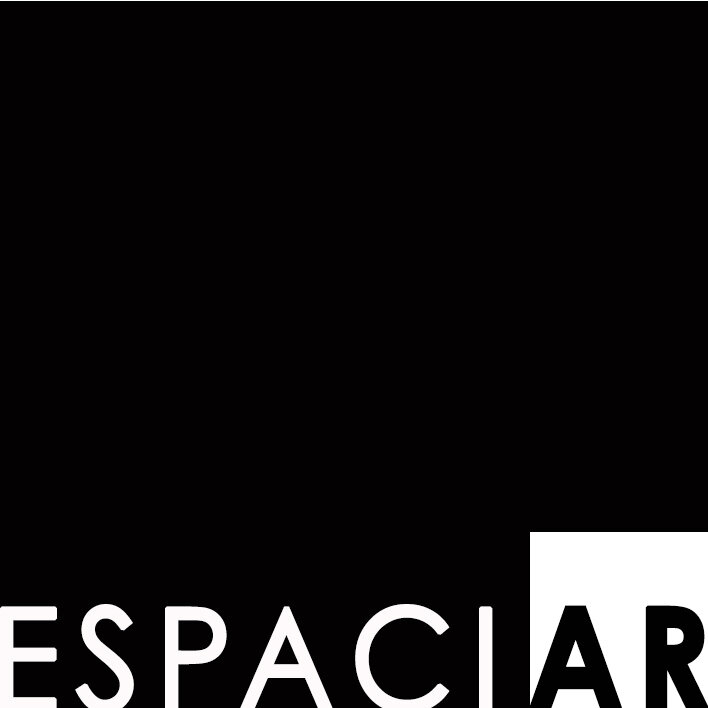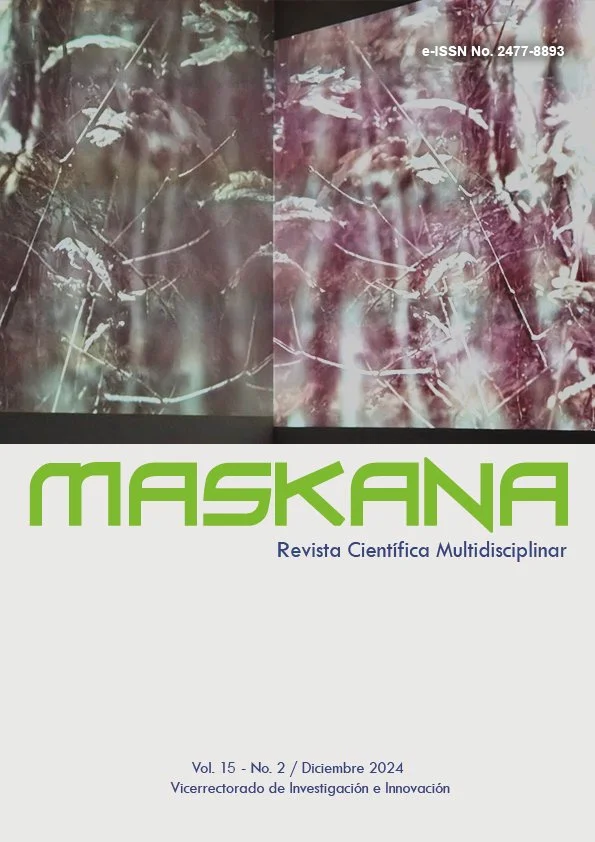Dossier temático
Digital Spaces. La nueva espacialidad escenográfica
Editores invitados:
Pablo Llamazares Blanco (https://orcid.org/0000-0002-5159-3817)
Fernando Zaparaín Hernández (https://orcid.org/0000-0002-9659-2906)
Jorge Ramos Jular (https://orcid.org/0000-0002-4213-0060)
Convocatoria
“En los últimos diez años, toda una serie de cosas bastante sorprendentes han recibido el nombre de esculturas: estrechos pasillos con monitores de televisión en los extremos; grandes fotografías documentando excursiones campestres; espejos situados en ángulos extraños de habitaciones; o líneas trazadas sobre la superficie del desierto” (1).
Así comenzaba Rosalind Krauss su manifiesto Sculpture in the Expanded Field, de 1979, con el que cuestionaba una tradición escultórica, en la que el objeto artístico había alcanzado su mayor grado de desarrollo. Una realidad a la que contribuyó la propuesta minimalista de autores como Donald Judd y Robert Morris, en el restablecimiento de las relaciones perceptivas que mediarían en un espacio experiencial compartido por la obra de arte y el espectador. Esto habría impulsado a las mayores cotas de expresión el desbordamiento de los límites entre disciplinas que reconocía Krauss, y que se venía gestando desde las Vanguardias. La espacialidad, desde su realidad creativa más amplia, ha experimentado desde entonces una rápida evolución hacia nuevas realidades fenomenológicas, en las que prima una experiencia surgida de la aprehensión subjetiva de estímulos sensoriales. Indiscutiblemente, las instalaciones artísticas que se erigieron como formato en las postrimerías del pasado siglo XX, fueron muy significativas en la adopción de nuevas estrategias inmersivas y multisensoriales. Pero en nuestros días, y a causa del gran protagonismo conferido a lo digital, cabe reflexionar sobre el papel de los medios digitales en la gestación de una nueva espacialidad en arte y arquitectura.
Los nuevos medios digitales, presentes en todos los ámbitos de la sociedad contemporánea, están ejemplificando una renovación de la creación actual en sus diferentes manifestaciones: instalaciones artísticas, artes escénicas, eventos y espectáculos, videojuegos, videomappings urbanos, aplicaciones arquitectónicas, etc. Así, este nuevo posicionamiento multimedia, que parte de la adopción de las múltiples e inconmensurables posibilidades del software digital, ha devenido en una nueva expresión escenográfica, generando configuraciones espaciales con un gran potencial innovador. Un hecho que favorecería las nuevas transformaciones que se están sucediendo con respecto a la percepción del espacio, como consecuencia de esas posibilidades técnicas y estéticas de lo digital. Andrew Darley afirma que la cultura visual contemporánea ha evolucionado para centrarse en una estética, basada en “la dimensión de la apariencia, de la forma y de las sensaciones” (2). Un hecho que llevaría a deshacerse de prejuicios de enfoques previos, que consideraban estas nuevas manifestaciones vacuas y demasiado obvias como para constituir un verdadero objeto de estudio. Para el propio Darley, lo estético adquiere incluso más importancia que el significado, puesto que este tipo de realizaciones se dirigen eminentemente a los sentidos, para tratar de descifrar los procesos por los que dichas propuestas digitales se configuran. Una posición sustentada en los planteamientos de Jean Baudrillard, al afirmar que “el montaje y la codificación requieren, en efecto, que el espectador lo reconstruya y lo descifre siguiendo el mismo proceso por el que la obra fue ensamblada” (3). Se trataría de una posición activa a la que invitan las propuestas de autores como Bill Viola, Bruce Nauman o Rafael Lozano-Hemmer que, desde la creación artística, proponen una nueva percepción del espacio con el montaje digital que presentan. Algo que sucede de igual manera en otros campos creativos como el diseño escenográfico de ópera, teatro y danza, familiarizados históricamente con la producción de montajes y decorados, de gran poder sorpresivo para el espectador. Referentes como Robert Lepage o Klaus Obermaier fueron pioneros en la adaptación digital de esos formatos, abriendo camino a nuevas propuestas como las de Adrien M & Claire B o Random International, que han apostado por una interactividad que, de nuevo, habla de los límites del espacio contemporáneo. Otros grandes eventos y espectáculos musicales, como los que diseña Es Devlin, también han apostado por una aplicación en el espacio de medios y recursos digitales, en la búsqueda de una experiencia integradora a nivel sensitivo. En suma, todo ello parece apuntar hacia un predominio de estrategias inmersivas y multisensoriales que, fundamentado en lo digital y aplicado desde un enfoque transversal o interdisciplinar, está redundando en una interesante acción reflexiva en torno a la propia espacialidad contemporánea.
A partir de lo anterior, esta convocatoria acoge con interés propuestas de artículos originales que traten sobre hitos trascendentales de este devenir creativo que se apoya en lo digital, o casos concretos de estudio que hayan contribuido a tal hecho. En lo que se refiere al enfoque de las investigaciones, se propone a su vez que estas se realicen prestando especial atención a algunas de aquellas características que definen esta nueva espacialidad: desmaterialización, cinestesia, tridimensionalidad, aumento, inmersividad, interactividad o conectividad. A su vez, se aceptarán aquellas aproximaciones al tema que se realicen desde el arte, la arquitectura, el teatro, la danza, el cine, etc. Una llamada para reflexionar sobre ese nuevo espacio escenográfico en distintos ámbitos, en un momento en el que la presencia de los medios digitales se ha hecho totalmente imprescindible en la creación contemporánea.
——————————
(1) KRAUSS, Rosalind. “Sculpture in the Expanded Field”. October. Boston: MIT Press, 1979, p. 30.
(2) DARLEY, Andrew. Cultura visual digital. Barcelona: Editorial Paidós, 2002, p. 24.
(3) BAUDRILLARD, Jean. Simulations. Nueva York: Semiotext(e), 1983, pp, 119-120.
Llamada de artículos
Los autores interesados en contribuir podrán enviar sus artículos hasta el 29 de julio de 2024, a través de: https://publicaciones.ucuenca.edu.ec/ojs/index.php/maskana/envio
Las contribuciones se podrán presentar en español o inglés, y se seguirán la plantilla de artículos y directrices de autores que establece la propia revista en la referida dirección web.
Fechas de interés:
- 16 de mayo de 2024: lanzamiento de la convocatoria del dossier
- 29 de julio de 2024: fecha límite para la recepción de artículos
- Diciembre de 2024: publicación del dossier Digital Spaces
Para mayor información: maskana.diuc@ucuenca.edu.ec | pablo.llamazares@uva.es
Coordinación: Proyecto I+D DIGITALSTAGE. Análisis espacial de instalaciones escenográficas digitales del siglo XXI (ref. PID2021-123974NB-I00, 2022-2024), del Plan Estatal de Investigación Científica, Técnica y de Innovación 2021-2023 (Ministerio de Ciencia e Innovación del Gobierno de España). Un proyecto que desarrolla el Grupo de Investigación Reconocido ESPACIAR, de la Escuela Técnica Superior de Arquitectura de la Universidad de Valladolid (España).
Announcement
"In the last ten years, a whole series of rather surprising things have been called sculptures: narrow corridors with television monitors at the ends; large photographs documenting country excursions; mirrors placed at odd angles in rooms; or lines drawn on the surface of the desert” (1).
This is how Rosalind Krauss began her 1979 manifesto Sculpture in the Expanded Field, with which she questioned a sculptural tradition in which the artistic object had reached its highest level of development. A reality to which the minimalist proposal of authors such as Donald Judd and Robert Morris contributed, in the re-establishment of the perceptive relations that would mediate an experiential space shared by the work of art and the spectator. This would have propelled the overflowing of the limits between disciplines that Krauss recognised, and which had been brewing since the Avant-Garde, to the greatest heights of expression. Spatiality, from its broadest creative reality, has since undergone a rapid evolution towards new phenomenological realities, in which an experience arising from the subjective apprehension of sensorial stimuli takes precedence. Undoubtedly, the art installations that emerged as a format in the late twentieth century were very significant in the adoption of new immersive and multisensory strategies. But nowadays, and because of the great prominence given to the digital, it is worth reflecting on the role of digital media in the gestation of a new spatiality in art and architecture.
The new digital media, present in all spheres of contemporary society, are exemplifying a renewal of current creation in its different manifestations: artistic installations, performing arts, events and shows, video games, urban video mappings, architectural applications, etc. Thus, this new multimedia positioning, based on the adoption of the multiple and immeasurable possibilities of digital software, has become a new scenographic expression, generating spatial configurations with a great innovative potential. A fact that would favour the new transformations that are taking place with regard to the perception of space, as a consequence of these technical and aesthetic possibilities of the digital. Andrew Darley states that contemporary visual culture has evolved to focus on an aesthetic, based on "the dimension of appearance, form and sensation" (2). A fact that would lead to getting rid of the prejudices of previous approaches, which considered these new manifestations to be empty and too obvious to constitute a true object of study. For Darley himself, the aesthetic takes on even more importance than meaning, since this type of production eminently addresses the senses, in an attempt to decipher the processes by which these digital proposals are configured. A position sustained by Jean Baudrillard's statements, when he affirms that "assembly and codification require, in effect, that the spectator reconstructs and deciphers it by following the same process by which the work was assembled" (3). This is an active position to which the proposals of authors such as Bill Viola, Bruce Nauman or Rafael Lozano-Hemmer who, from artistic creation, propose a new perception of space with the digital montage they present. Something that happens in the same way in other creative fields such as the scenographic design of opera, theatre and dance, historically familiar with the production of stagings and sets, of great surprising power for the spectator. References such as Robert Lepage or Klaus Obermaier were pioneers in the digital adaptation of these formats, paving the way for new proposals such as those of Adrien M & Claire B or Random International, which have opted for an interactivity that, once again, speaks of the limits of contemporary space. Other big events and musical shows, such as those designed by Es Devlin, have also opted for an application in the space of digital media and resources, in the search for an integrating experience on a sensorial level. In short, all this seems to point towards a predominance of immersive and multisensorial strategies that, based on the digital and applied from a transversal or interdisciplinary approach, is resulting in an interesting reflexive action around contemporary spatiality itself.
Based on the above, this call welcomes proposals for original articles that deal with transcendental milestones in this creative evolution that is based on the digital, or specific case studies that have contributed to this development. With regard to the focus of the research, it is proposed that it should pay special attention to some of the characteristics that define this new spatiality: dematerialisation, kinaesthesia, three-dimensionality, augmentation, immersiveness, interactivity or connectivity. At the same time, approaches to the subject from the fields of art, architecture, theatre, dance, cinema, etc. will be accepted. A call to reflect on this new scenographic space in different fields, at a time when the presence of digital media has become absolutely essential in contemporary creation.
——————————
(1) KRAUSS, Rosalind. “Sculpture in the Expanded Field”. October. Boston: MIT Press, 1979, p. 30.
(2) DARLEY, Andrew. Cultura visual digital. Barcelona: Editorial Paidós, 2002, p. 24.
(3) BAUDRILLARD, Jean. Simulations. Nueva York: Semiotext(e), 1983, pp, 119-120.
Call for papers
Authors interested in contributing can send their articles until 29 July 2024, via: https://publicaciones.ucuenca.edu.ec/ojs/index.php/maskana/envio
Contributions may be submitted in Spanish or English, and will follow the template for articles and author guidelines established by the journal itself at the aforementioned web address.
Dates of interest:
- 16 May 2024: launching of the call for papers
- 29 July 2024: deadline for the receipt of articles
- December 2024: publication of the Digital Spaces dossier.
For more information: maskana.diuc@ucuenca.edu.ec | pablo.llamazares@uva.es
Coordination: R&D project DIGITALSTAGE. Spatial analysis of digital scenographic installations of the 21st century (ref. PID2021-123974NB-I00, 2022-2024), of the Plan Estatal de Investigación Científica, Técnica y de Innovación 2021-2023 (Ministry of Science and Innovation of the Government of Spain). A project developed by the ESPACIAR Recognised Research Group of the School of Architecture of the University of Valladolid (Spain).

